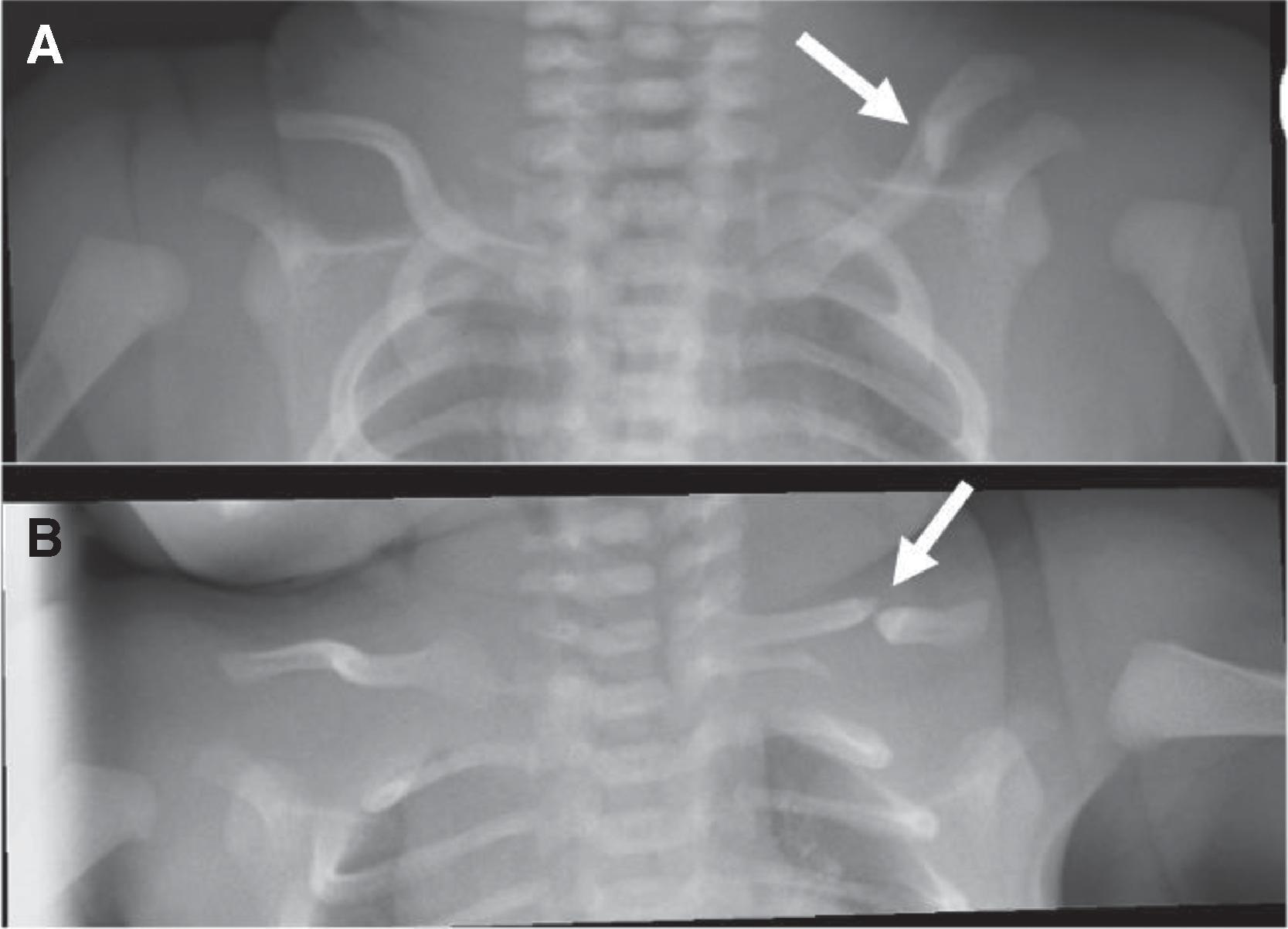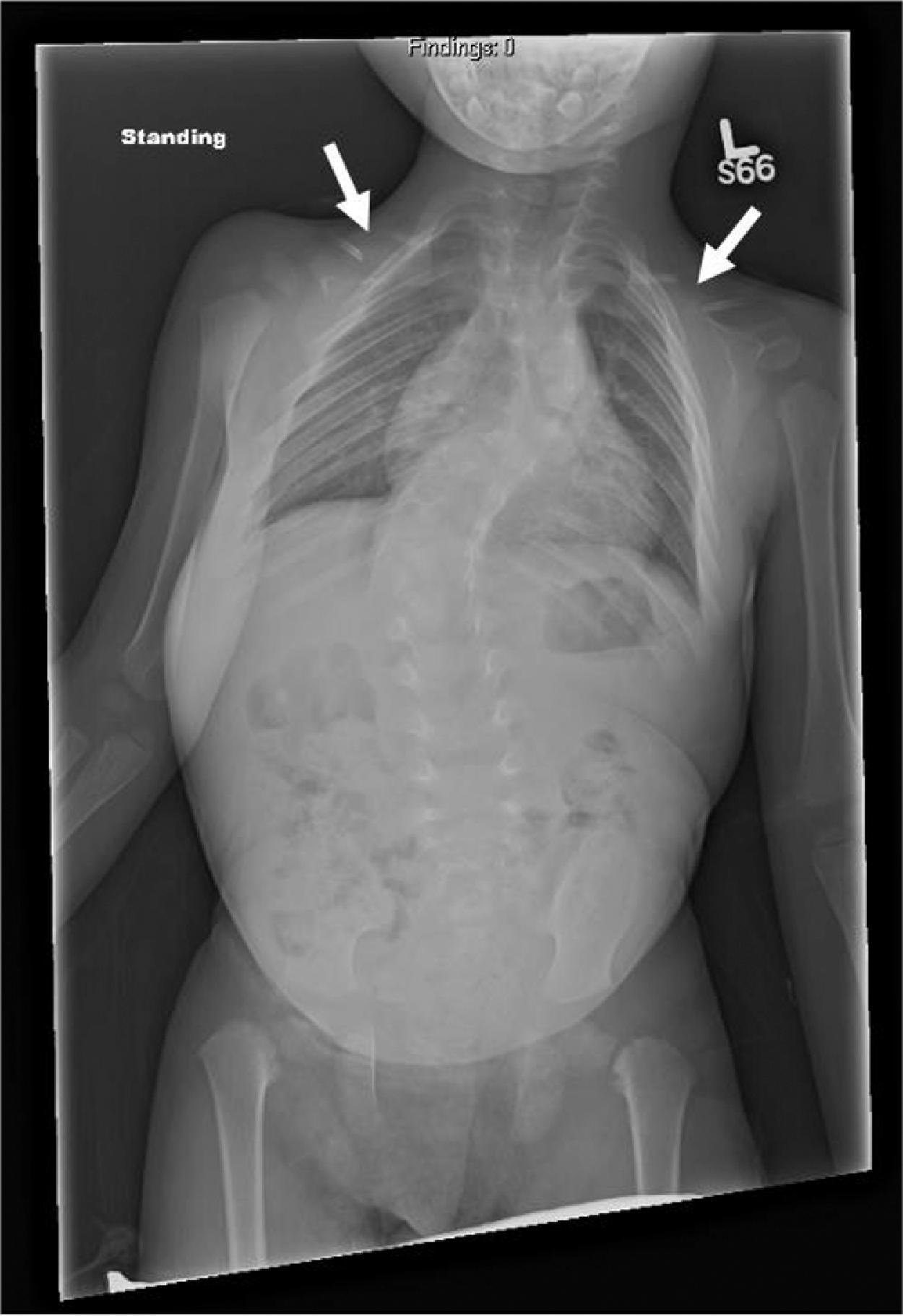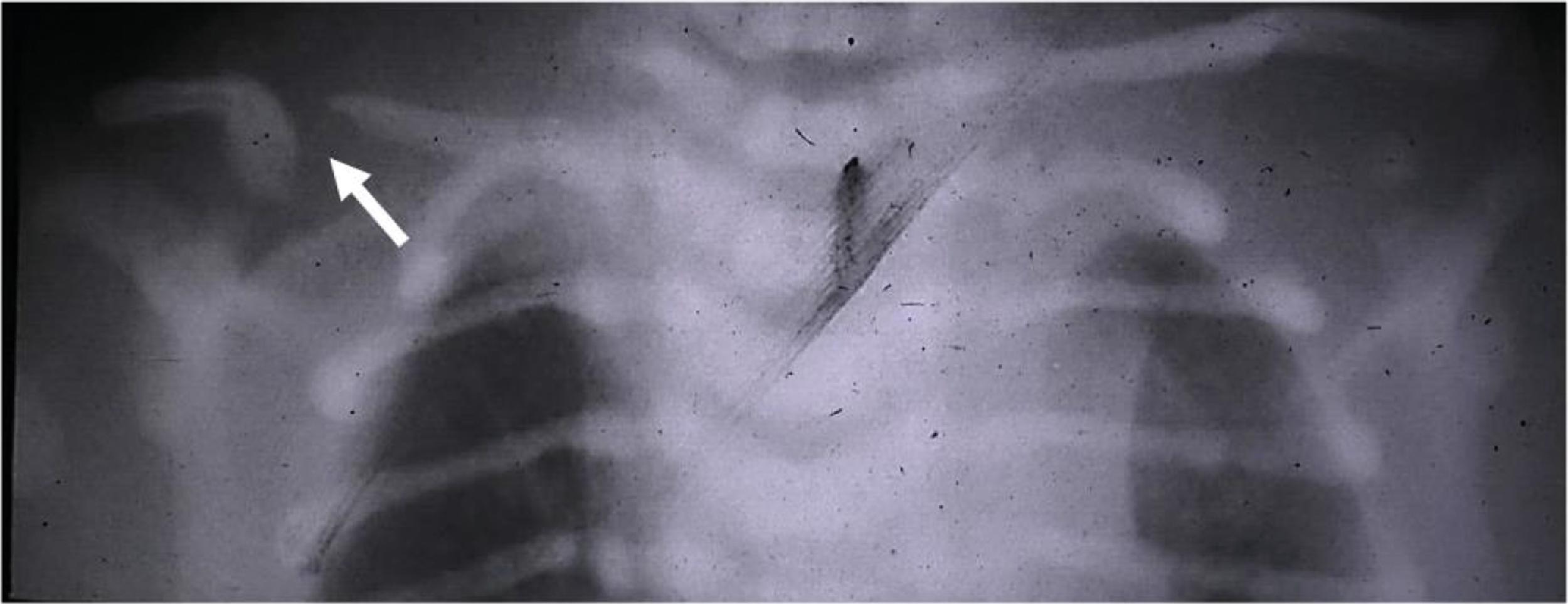Physical Address
304 North Cardinal St.
Dorchester Center, MA 02124
Fractures and musculoskeletal infections in neonates follow a distinct pathophysiology.
The clavicle is the most frequently injured long bone in newborns; the injury occurs most often during birth. These fractures heal and remodel well. In some infants, congenital pseudoarthrosis of the clavicle may need to be differentiated from fractures.
The humerus is the second most common long bone to be fractured in neonates; most fractures occur during birth or early infancy. These fractures are typically midshaft; some may be seen in proximal and distal epiphyses.
Neonatal femur fractures can sometimes occur during birth and have been associated with shoulder dystocia, twin pregnancies, breech presentation, prematurity, small size for gestational age, and congenital osteoporosis.
Musculoskeletal infections in the newborn have a unique pathophysiology and may occur in multiple locations simultaneously. The most frequently isolated organisms are Staphylococcus aureus , but sometimes nonstaphylococcal bacteria can also be seen.
The clavicle is the most frequently injured long bone in newborns, composing between 10% and 15% of all fractures. The incidence of clavicle fractures in neonates ranges from 0.5% to 7% of all live births. , The fractured clavicle typically demonstrates excellent healing even with no intervention, and surgery is rarely indicated. The prognosis is almost always highly favorable.
In the neonate, the most common mechanism of clavicular injury is during birth, whereas other traumas such as falling on an outstretched arm are predominantly responsible in older children. Previously identified risk factors for obstetric clavicle fracture include large birth weight (>4500 g), shoulder dystocia, prolonged gestational age, and difficult or complicated deliveries involving mechanical assistance. , Midshaft fractures are the most common pattern of injury in the neonate. Fractures of the medial or lateral clavicle are more likely to involve the physis, although these are difficult to diagnose radiographically because the epiphyses are not yet ossified at this age. The acromioclavicular and sternoclavicular joints are relatively stable due to strong supporting ligaments, making dislocation at these joints fairly uncommon.
Neonatal clavicle fractures are most commonly detected within the first 3 days of life, although recognition and diagnosis can be challenging. They are often first discovered when parents notice a lack of spontaneous movement in their infant’s upper extremity, often termed “pseudoparalysis.” Visible callus formation within 7 to 10 days of the injury may also be one of the first clinical clues. Common signs and symptoms that aid in diagnosis include point tenderness, swelling or edema, crepitation, asymmetric bone contour, decreased active movement, crying on passive movement, and decreased Moro reflex (also known as startle reflex). , Diagnosis can also be made by palpating a spongy mass over the fracture site. However, the majority of these signs may not persist beyond a few days after birth.
Initial radiographs may be negative or inconclusive, especially for minimally displaced fractures ( Fig. 74.1 ). In such cases, repeat radiographs of the clavicle may be helpful if obtained within 7 to 10 days after callus formation and periosteal reaction have begun. Ultrasonography may occasionally aid in diagnosis of occult neonatal fractures.

The most important differential diagnosis is congenital pseudarthrosis of the clavicle, which is discussed in further detail below. Unlike fractures, pseudarthroses are nontender or minimally tender. Another condition to differentiate is cleidocranial dysplasia. This condition, due to a mutation in CBFA1 , presents with large gaps in the opposing ends of both clavicles, which are also smooth ( Fig. 74.2 ). In some cases, the clavicles are absent entirely. No treatment is needed for the clavicles themselves, although there are other skeletal deformities associated with this condition.

Clavicle fractures always heal and remodel well in newborns with no residual deformity. Erb’s palsy (brachial plexus injury) should also be ruled out in neonates with clavicular fracture.
In all cases, management can be conservative. Simple immobilization methods such as a sling, ace wrap, or shirt that holds the affected arm close to the infant’s torso generally provide sufficient comfort and allow for initial stages of healing. Referral to a pediatric orthopedic surgeon can be helpful.
Congenital pseudarthrosis of the clavicle (CPC) is a rare condition almost always occurs on the right side, except in patients with situs inversus. Left-sided lesions are therefore strongly associated with dextrocardia and cervical ribs. A few bilateral cases have also been described, although this is exceedingly rare. Some studies suggest a higher predilection for females compared with males. Although the pathophysiology of CPC is poorly understood, reports of familial association suggest a potential genetic component. ,
Importantly, CPC is commonly misdiagnosed as clavicular fracture or injury due to abuse. The classic physical exam finding is a painless mass or swelling over the middle third of the affected clavicle. This may be due to enlargement of the disjointed pseudoarticular ends. Notably, the mass tends to grow in size with age. Absence of tenderness is a key diagnostic clue that distinguishes CPC from acute fracture, although physical activities producing compression of the lesion may produce pain in some children. Diagnosis is confirmed by the presence of smooth, tapered opposing ends of the bone, in contrast to the sharp edges of a fresh fracture ( Fig. 74.3 ).

The mass is more accentuated when patients raise the upper limb. , Upper-extremity range of motion, strength, and sensation are normal in the vast majority of cases but may be affected depending on severity of fragment misalignment and malunion. Hypermobility of the distal segment and asymmetric drooping of the scapula may be noted in some cases.
The lifetime prognosis is almost always benign with no real complications beyond cosmetic deformity, with very rare occurrences of thoracic outlet obstruction in some patients after reaching adulthood. No treatment is needed in the newborn period, although pseudarthroses that are symptomatic may be successfully fixed as the child ages.
Become a Clinical Tree membership for Full access and enjoy Unlimited articles
If you are a member. Log in here